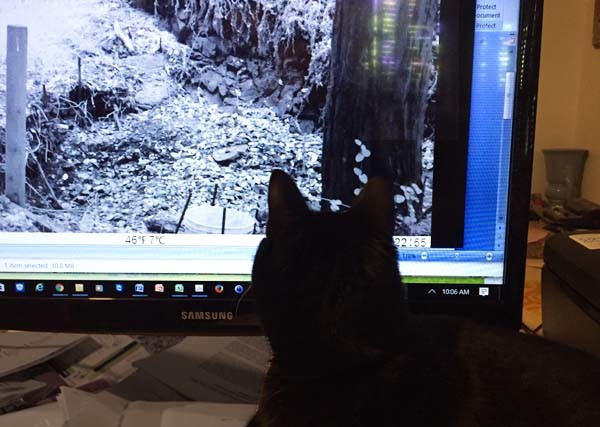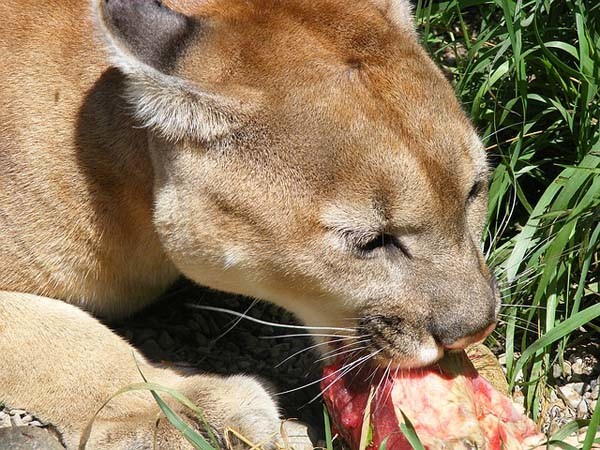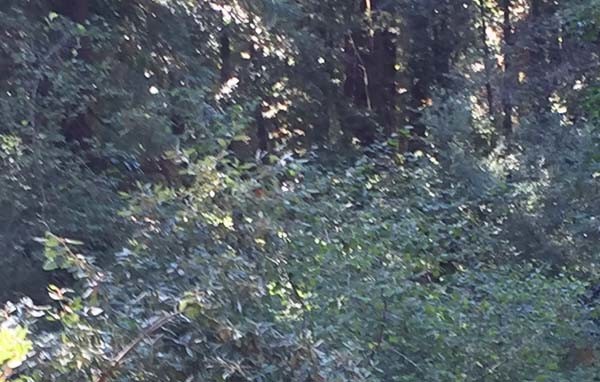On a Quest to film the Neighborhood Mountain Lions
Patience is only one part of the equation to successfully film mountain lions in their natural environment. I’m the first to admit that patience isn’t one of my strongest characteristics. It can take weeks, sometimes months before a big cat cruises in front of a trail camera. The other crucial detail is finding a good location for the camera, an area that’s attractive to pumas. Mountain lions don’t normally saunter over to cameras and take selfies. There has to be a reason for them to be in the area. Food, sex and territorial patrols are high on the list.
A couple of months ago we placed one of the cameras on a game trail facing a popular watering hole. The local wild life and feral cats frequently visited the pool to quench their thirst. Unfortunately, last week, the hot days took their toll—the creek dried up. No longer is it an oasis for the deer, a favorite meal for mountain lions. Although the lens didn’t catch mountain lions or bobcats, it did film the antics of skunks, foxes, possums, deer, raccoons and house cats.
There is lots of talk about local mountain lions
Yesterday we relocated the camera up the road on a friend’s property. Recently, he and his neighbors have seen a number of mountain lions. They’ve observed the big cats crossing roads and hanging out in the woods near their homes. Sadly, many of their pets have disappeared. Most likely, one of the reasons the lions are hanging out in the ‘hood is because the human residents aren’t keeping their dogs and cats safe inside. From the puma’s perspective, it’s easier and safer to catch a cat or dog than a large deer with dangerous hoofs. (Please neighbors, keep your pets inside where they are safe!)
Mountain lions are hunters and scavengers
Although mountain lions favor deer, they are opportunistic hunters. Being practical opportunists, they don’t limit themselves to venison. Smaller prey including rabbits, raccoons and house pets are sometimes included on the menu. In addition to hunting, the large cats will also scavenge. Fresh road kill is not off limits. It makes sense—hunting takes lots of energy and can be dangerous. Prey, fighting for their lives can severely injure pumas with their hoofs and teeth. Hunting isn’t always easy.
Puma’s don’t eat a whole deer in one sitting. Instead they cache it for future meals, visiting the carcass periodically for a gnosh. Usually the mountain lions cover them with dirt and leaves to make them less obvious to other predators.
It would be ideal if we found a cached carcass to focus the camera on. We didn’t.
Looking for other evidence of mountain lions
Besides the remains of meals, there are other subtler signs to look for. Lions mark and leave scent for other conspecifics by scraping, urine and feces marking and they score trees and logs. Their paw prints are recognizable by their shape, especially the palm paw pad. The 3 lobes on the bottom part of the pad forms an “m”. And of course, let’s not forget the poop, technically and more politely referred to as “scat".
Planting the trail camera
After scouting around, we set up the trail camera next to a creek in a deep ravine that is deep in brush. We focused it up a game trail that deer habitually use. Nearby are deeply scored trees and logs that may be announcements that a big cat is periodically patrolling the area.
The only thing left to do is wait and practice patience. In 30 days we will visit the camera and see what it has caught.
For lively discussions about cats and behavior, please check out The Cat Coach on Facebook.






